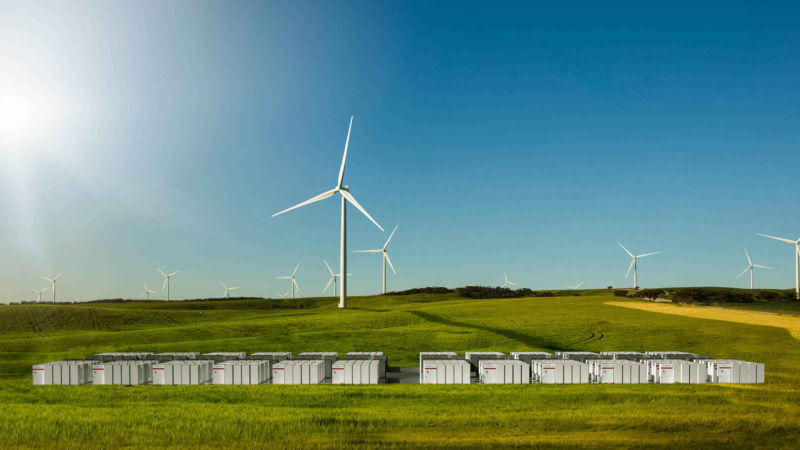A Tesla battery for South Australia
In more than one way this was big. It was very large news in South Australia when CEO of Tesla, Elon Musk, announced that, in partnership with the SA Government and neoen, the Hornsdale wind farm would be home to a new Tesla battery system.

A Tesla battery system for South Australia that is a full three times bigger than the current biggest battery system in the world!
The news will probably not fix all of South Australia’s issues but it was a significant development for the renewables sector in Australia. South Australia was already prominently involved in the construction of new renewable energy. This announcement shows that it wants to be a world leader in the integration of renewable energy.
This new battery system will be an interesting test case of large-scale grid stabilisation, providing a hypothetical rapid injection of power when it’s needed most. Though there are still details to be worked out about how it will work, this is absolutely a space to watch closely – the plan is for the system to be operational before summer.
The announcement certainly attracted plenty of attention. But beyond the immediate headlines and the photo op, what more can we learn from Friday’s big moment?
I listened to Musk’s press conference and went through Tesla’s post about the project. Here are my key takeaways:
- The rated output is 100MW, and the battery can store 129 MW hours. As Tesla say on their blog, this “will provide enough power for more than 30,000 homes, approximately equal to the number of homes that lost power during the blackout period” (a reference to the 2016 September blackout in SA)
- From what’s been released so far, it seems the battery system will be primarily designated for providing rapid-response to fluctuations in the grid. It isn’t designed for sustained, long-term output. It might not be enough to prevent brownouts or blackouts, but it’s an important part of reducing the probability of them. As energy experts have said, “It might seem like a drop in the energy demand ocean, but it’s the first of many drops”.
- As Tesla say, on the company’s blog: “Tesla Powerpack will charge using renewable energy from the Hornsdale Wind Farm and then deliver electricity during peak hours to help maintain the reliable operation of South Australia’s electrical infrastructure”
- The batteries will last 15 years, but the operators can switch out old batteries for new ones, and they’ll integrate into the system.
- Some have speculated that regardless of future government settings it will be hard to attract investors for future coal-based power stations. Musk seemed to agree with this argument. “The fundamental challenge with coal power stations is that they’re quite difficult to get financed. Investors know that coal does not have a long term future. So the capital cost is quite high,” he said, responding to a question about new coal-fired power stations in Australia
- The project, and its world-leading size, offer opportunities beyond improved energy security. “We’re going to make an effort to make it look good,” Musk said. ”It’ll be a tourist destination for quite some time”
- A local company, CPP, will be doing the construction work. A Tesla representative was very clear, up front, about the fact that construction will bring a lot of jobs, but that the operational phase doesn’t require as many workers.
Though ARENA had no involvement with this announcement, this is a significant moment for the integration of renewable energy in Australia – a key focus area for ARENA.
As a rapid-response technology, lithium-ion battery systems can serve a vital function in stabilising the grid. ARENA is very much involved with investigating the potential of this type of technology.
ARENA’s funding of a ‘virtual’ battery’ system springs to mind – 1,000 Adelaide households, interconnected through digital software by AGL Energy, can serve a very similar function for grid security, albeit at a smaller power output (5 megawatts, as opposed to Hornsdale’s 100).
ARENA has also funded research into the CSIRO’s “Ultra batteries”, and studied battery integration projects such as the King Island project, the Lakeland solar storage project and Queensland’s truly fascinating Kennedy Energy Park project. ARENA has also funded an advanced facility that’s testing the performance of lithium ion batteries, including Tesla’s power pack.
This is an expanded version of a LinkedIn post. Ketan Joshi is a freelance communications consultant with a range of clients in Australia. These are his views and are not necessarily representative of ARENA.
LIKE THIS STORY? SIGN UP TO OUR NEWSLETTER

ARENA